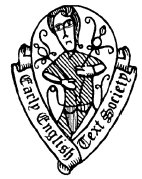
Arundel Castle is a restored and remodelled medieval castle in Arundel, West Sussex, England. It was established by Roger de Montgomery on Christmas Day 1067. Roger became the first to hold the earldom of Arundel by the graces of William the Conqueror. The castle was damaged in the English Civil War and then restored in the 18th and 19th centuries.
Benjamin Thorpe was an English scholar of Anglo-Saxon literature.

Earl of Arundel is an earldom and the oldest extant peerage in the Peerage of England. It is currently held by the Duke of Norfolk, and is used by his heir apparent as a courtesy title. It was created c. 1138 for the Norman baron Sir William d'Aubigny. Its origin was the earlier grant by Henry I to his second wife Adeliza of the forfeited "honour" of Arundel, which included the castle and a large portion of Sussex. After his death she married William, who thus became master of the lands, and who from about the year 1141 is variously styled earl of Sussex, of Chichester, or of Arundel. His first known appearance as earl is at Christmas 1141. Until the mid-13th century, the earls were also frequently known as Earl of Sussex, until this title fell into disuse. At about the same time, the earldom fell to the originally Breton FitzAlan Family, a younger branch of which went on to become the Stuart Family, which later ruled Scotland.
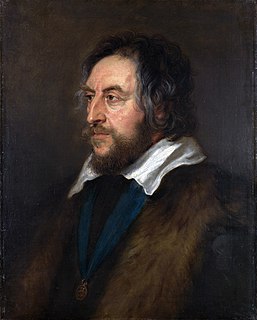
Thomas Howard, 21st Earl of Arundel KG, was a prominent English courtier during the reigns of King James I and King Charles I, but he made his name as a Grand Tourist and art collector rather than as a politician. When he died he possessed 700 paintings, along with large collections of sculpture, books, prints, drawings, and antique jewellery. Most of his collection of marble carvings, known as the Arundel marbles, was eventually left to the University of Oxford.

Richard FitzAlan, 4th or 11th Earl of Arundel and 9th Earl of Surrey, KG was an English medieval nobleman and military commander.

A rape is a traditional territorial sub-division of the county of Sussex in England, formerly used for various administrative purposes. Their origin is unknown, but they appear to predate the Norman Conquest. Historically the rapes formed the basis of local government in Sussex.
The Chief Butler of England is an office of Grand Sergeanty associated with the feudal Manor of Kenninghall in Norfolk. The office requires service to be provided to the Monarch at the Coronation, in this case the service of Pincera Regis, or Chief Butler at the Coronation banquet.
William d'Aubigny, 1st Earl of Lincoln and 1st Earl of Arundel, also known as William d'Albini, William de Albini and William de Albini II, was an English nobleman. He was the son of William d'Aubigny "Pincerna" of Old Buckenham Castle in Norfolk, and Maud Bigod, daughter of Roger Bigod of Norfolk.
Alice Montagu was an English noblewoman and the suo jure 5th Countess of Salisbury, 6th Baroness Monthermer, and 7th and 4th Baroness Montagu, having succeeded to the titles in 1428. Her husband, Richard Neville became 5th Earl of Salisbury by right of his marriage to Alice.
William Taylor was a mediaeval English theologian and priest, executed as a Lollard.
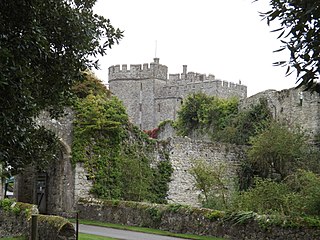
Saltwood Castle is a castle in Saltwood village, one mile (2 km) north of Hythe, Kent, England. Of 11th century origin, the castle was expanded in the 13th and 14th centuries. After the Norman Conquest, the castle was appropriated by the Archbishop of Canterbury Lanfranc and remained the property of the archbishops, with some interruptions, until 1540, when Thomas Cranmer was compelled to cede it to Henry VIII. The castle is reputed to have been the meeting place of the four knights who carried out the assassination of Thomas Becket in 1170. By the 19th century, it was "largely ruinous" and restorations to make portions of the castle habitable were carried out in the 1880s and 1930s. In the late 19th century, the castle was bought by an ancestor of Bill Deedes, the journalist and politician, who grew up there. In the 20th century, it was sold to Sir Martin Conway who commissioned Philip Tilden to undertake a restoration. In 1953, the castle was bought by the art historian Kenneth Clark (1903–1983), and then became the home of his son, the politician and diarist, Alan Clark (1928–1999). It remains the private home of his widow, Jane Clark. The castle is a Grade I listed building.
Nicholas Love, also known as Nicholas Luff, was the first prior of the Carthusian house of Mount Grace in Yorkshire. He was originally a Benedictine monk, perhaps of Freiston, a cell of Crowland Abbey in Lincolnshire. Love was preceded by three "rectors", as the Carthusian Order names the superiors of houses not yet formally incorporated. Love was the fourth rector, promoted to prior upon the incorporation of Mount Grace in 1411. The latest documentary occurrence of his name is 15 March 1423, and his death, as "former prior" is recorded in 1424.
William Thorpe may refer to:
Thorpe is a surname derived from the Middle English word thorp, meaning hamlet or small village. Thorpe is found as the name of many places in England.
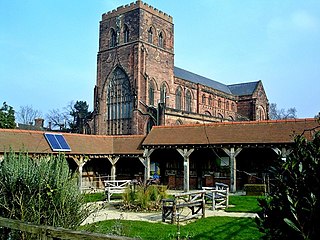
Thomas Prestbury was an English medieval Benedictine abbot and university Chancellor.
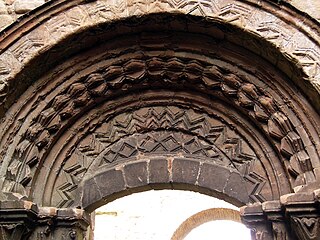
John Mirk was an Augustinian Canon Regular, active in the late 14th and early 15th centuries in Shropshire. He is noted as the author of widely copied, and later printed, books intended to aid parish priests and other clergy in their work. The most famous of these, his Book of Festivals or Festial was probably the most frequently printed English book before the Reformation.
Anne Mary Hudson, is a British retired literary historian and academic. She was a Fellow of Lady Margaret Hall, Oxford from 1963 to 2003, and Professor of Medieval English at the University of Oxford from 1989 to 2003.











